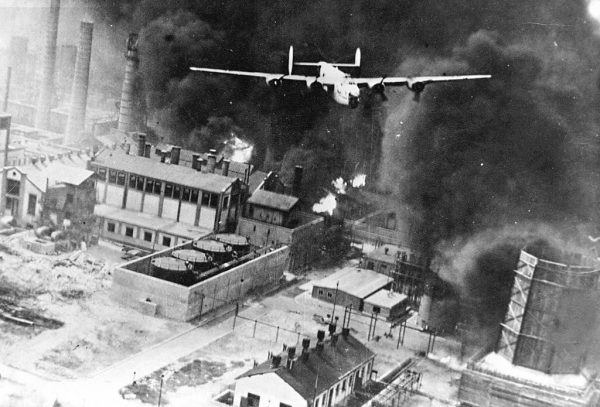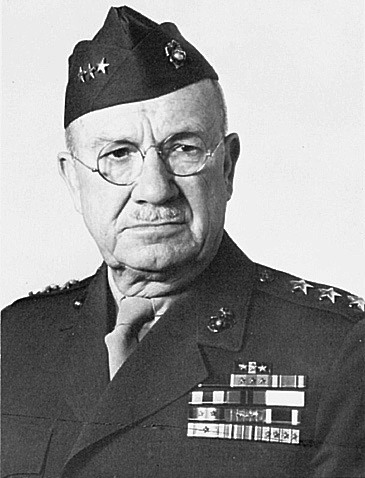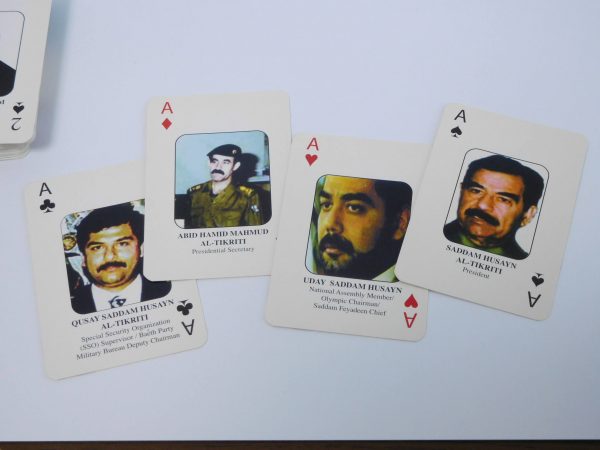Each week in the History Matters series, we drill down on important events that happened this week in military history. Also, be sure to check out the weekly segment of EXPERIENCE MATTERS on CRTV.
On June 12, 1944 (D-Day + 6), Paratroopers of the 101st Airborne Division capture Carentan, France after three days of heavy urban combat, finally linking the Utah and Omaha beachheads. Meanwhile, a third wave of troops and supplies land at the beaches of Normandy. Over 300,000 men, tens of thousands of vehicles, and hundreds of thousands of tons of materiel have hit the beach so far.
That same day in the Pacific, airplanes from Adm. Marc Mitscher’s Task Force 58, consisting of nine aircraft carriers and six light carriers, pound Japanese positions in the Marianas Islands in preparation for the upcoming invasions. The next day, over a dozen battleships join in the attack and being leveling the defenses of Saipan.
This week also marks the first American bombing missions of both world wars. On June 12, 1918, eight pilots of the 96th Aero Squadron conduct the first-ever American bombing mission in Europe, attacking rail yards at Etain, France. 24 years later (to the day), Col. Harry A. Halverson leads a flight of 13 B-24 Liberator bombers from Libya 1,000 miles to the Axis oil fields at Ploesti, Romania. One plane has to turn back due to mechanical issues, and the bombers inflict minimal damage to the target. Crews land at Turkey (where they are interned), Iraq, and Syria.
When we look at individual battles American soldiers, sailors, airmen, and Marines participated in during World War II, it is easy to lose sight of the massive scale of U.S. military involvement, which spanned the entire globe. Historian Victor Davis Hanson sums it up quite nicely in his excellent book THE SECOND WORLD WARS (HOW THE FIRST GLOBAL CONFLICT WAS FOUGHT AND WON): “On the single day of the invasion of Normandy (June 6, 1944), around the world other US forces were just as much on the attack at sea and in the air. As part of the ill-fated Operation Frantic shuttle-bombing operations between US air fields in Italy and refueling bases in the Soviet Ukraine, over 150 B-17s and their P-51 escorts attacked the oil fields at Galati, Romania. Another five hundred B-17s and their escorts hit the often-targeted Romanian fields at Ploesti. Meanwhile, the 12th Air Force conducted continuous tactical air strikes on German positions in Italy. Allied ground troops also had just occupied Rome two days earlier and were garrisoning the city in preparation for offensives against the Gothic Line in northern Italy.”
“In the Asian and Pacific theaters on this same landmark day of June 6,” Hanson writes, “the US Pacific Fleet was making preparations to invade the Mariana Islands within a week, with a combined force almost as large as had landed at Normandy. Meanwhile, B-29 bombers prepared for their first raid against Japan from forward bases in China, while six B-25 Mitchell medium bombers and ten P-51 escorts conducted operations against Tayang Chiang, China. B-25s were also attacking Japanese troops moving on Imphal, India. Meanwhile, the submarine Raton was tracking a Japanese convoy near Saigon. The submarine Harder sank a Japanese destroyer off Borneo, while the Pintado torpedoed and destroyed a cargo vessel off the Marianas. B-24 heavy bombers hit Ponape Island in Micronesia as tactical strikes were conducted against the Japanese on Bougainville, New Britain, and New Guinea.”
On the night of June 14, 1944, 75 B-29 Superfortress heavy bombers take off from forward air bases in China, targeting the Imperial Iron and Steel Works at Yawata, Japan – the first bombing raid on the Japanese mainland since the Doolittle Raid over two years ago. The crews had loaded their bombs in India and flew to China before the raid. 107 tons of bombs are dropped on a blacked-out Yamata, and unfortunately only one bomb hits the target.
June 15, 1944: Following a three-hour Naval and air bombardment, 8,000 Marines under the command of Maj. Gen. Holland M. “Howlin’ Mad” Smith hit the beaches of Saipan. The Japanese war planners are caught by surprise, and by nightfall the Marines have reached six miles inland.
Japanese propaganda led its people to believe that unspeakable acts await anyone unlucky enough to be captured by the U.S. military, and thousands of Japanese civilians will leap to their deaths from the cliffs of Saipan.
Incidentally, this week in 1918, Howlin’ Mad Smith was fighting Germans during the bloody Battle of Belleau Wood – for which the French decorated him with the Croix de Guerre.
Going back to 1862, the new commander of the Confederate Army of Northern Virginia, Gen. Robert E. Lee, orders Brig. Gen. J.E.B. Stuart to investigate the Union army’s right flank during the Peninsula Campaign. Stuart and his 1,200 troopers determine that the right flank is vulnerable, and with Union cavalry in pursuit (led by Stuart’s father-in-law, Brig. Gen. Philip St. George Cooke), Stuart and his men ride a 100-mile circle around Gen. George McClellan’s 105,000-man Army of the Potomac – capturing soldiers, horses, and supplies. Four days later, Stuart arrives in Richmond to a hero’s welcome.
This week in 1945, fighting on Okinawa is winding down as Marines and soldiers begin mopping up the remaining Japanese defenders. Following the capture of Okinawa and the Mariana Islands, the Army Air Force will use the Marianas as bases for strategic bombers, and fighter escorts will operate out of Okinawa for strikes against the Japanese mainland.
Had it not been for an incendiary attack on Yawata the day before by B-29s flying out of the Marianas and fighter-escorts from Okinawa, the city of Kokura would have been wiped out instead of Nagasaki in the second atomic attack. When his B-29 reached Kokura on August 9, 1945, Col. Paul Tibbets (who led the first large-scale bombing mission in Europe) found the city blanketed by smoke from Yamata and continued on to drop the “Fat Man” on the secondary target of Nagasaki.
June 16, 2003: Called the “greatest success” since the end of major combat operations in Iraq, Delta Force operators and British Special Air Service commandos capture Lt. Gen. Abid Hamid Mahmud al-Tikriti – Saddam Hussein’s right hand man. Mahmud was the fourth-most wanted man in Iraq, after Saddam and his sons Uday and Qusay.
And deep in the jungles of Laos, 50 years ago this week, a Special Operations Group recon team is hit by a battalion-sized force of North Vietnamese Army shortly after insertion. Specialist Fifth Class John J. Kedenburg calls in tactical air support and radios for extraction while the SOG team, which was outnumbered by 50:1, attempts to break contact. They incredibly manage to fight their way to an extraction point intact, but one South Vietnamese soldier goes missing during the battle. When helicopters arrive with slings to pull out the operators, the missing soldier suddenly reappears.
Kedenburg gives up his rescue harness for the returning soldier and orders the last helicopter to leave. As his teammates leave the area, they watch Kedenburg killing communists before he calls in a final air strike on his own position. Another SOG team later fights their way in to recover their lost comrade, who is posthumously awarded the Medal of Honor for sacrificing himself to save others.



